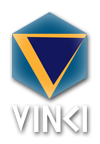 |
s45b0The Rykami Yasmyne Sketchbook |
The Jasmine Book
I began to keep sketchbooks in the latter three years of the 5-year professional bachelor program in architecture at Illinois Institute of Technology. In late 1990, I developed a realistic pencil technique that involved 2B, HB, and 4H lead for a wide gamut of gray. This style became known as “rucisaime”. The first sketchbook, with a long portrait of the dedicatee Arebinâ, the Rykami Arebine, had developed over two summers and was lost. In it, the rucisaime technique was sharpened. I had a long-standing problem with finishing work because the technique was too rich. With rucisaime in a sketchbook, I could fully develop a drawing in a couple hours.
After the loss of Rykami Arebine, I began Rykami Yasmyne. A few halting sketches started the book and it was laid aside until the semester in Tuscany in spring 1992. The sketchbook became the vehicle for exploration of the marvels of Italy, Paris, and Barcelona, all rendered in rucisaime. The book is more experimental than the lost Rykami Arebine, and includes many unfinished studies. In subsequent college years, additional drawings were added in rucisaime. The sketchbook saw peak development during the spring 1992 semester in Italy and the subsequent travel around Europe. It received some sketches into the remaining part of 1992 before development ceased.
Like many of the class notes I kept in high school and college, the back of the sketchbook was reserved for exploring the creation of the conlang lrixe, an endeavor partaken between age 13 and 28, and now only finds use in passwords, life-phase names, and retrospectives. An outcropping of this endeavor, having developed shortly before it, is a fascination with number bases. The tayya dates, four-number time codes on most of my work including these in the Rykami Yasmyne, are duodecimal days elapsed since 1 July 1970. I'd kept tayya since mid 1985. My explorations reached beyond duodecimal and vigesimal to sexagesimal, so that in the late spring of 1992, I developed a set of numerals later called Argam Arimaxa used to represent numbers in large pure radixes. This is the kernel of the later expansion and reform of argam numerals in 2006-2008 to its modern state.
This page last modified Sunday 8 April 2012.



















